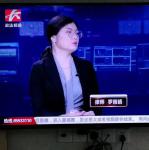COURT OF APPEAL FOR BRITISH COLUMBIA
Citation:
Bajwa v. Pannu,
2007 BCCA 260
Date: (略)
Docket: CA034258;
CA034248
Docket: CA034258
Between:
Baljit Kaur Bajwa also known as Baljit Kaur Virk
and Balwant Kaur Virk
Appellants
(Respondents)
And
Rupinder Pannu also known as Rupinder Singh Pannu
Respondent
(Petitioner)
- and -
Docket: CA034248
Between:
Baljit Kaur Bajwa also known as Baljit Kaur Virk
and Balwant Kaur Virk
Appellants
(Plaintiffs)
And
Rupinder Pannu also known as Rupinder Singh Pannu
Respondent
(Defendant)
Before:
The Honourable Mr. Justice Hall
The Honourable Mr. Justice Low
The Honourable Mr. Justice Lowry
Oral Reasons for Judgment
W.R. Neufeld
A.M. Narang
Counsel for the Appellant
A.N. Habib
Counsel for the Respondent
Place and Date of Hearing:
Vancouver, British Columbia
25 April 2007
Place and Date of Judgment:
Vancouver, British Columbia
26 April 2007
[1] LOW, J.A.: This appeal arises out of a dispute over beneficial ownership of real property on Queen Street in Abbotsford registered in January 2001 in the names of all three parties as joint tenants. The respondent Rupinder Pannu brought partition proceedings in May 2003. A year later the appellants Baljit Virk and her mother Balwant Virk brought an action seeking a declaration that Mr. Pannu holds a one-third interest in the property in trust for them. Arnold-Bailey J. consolidated the two proceedings and heard them by way of summary trial under R. 18A of the Rules of Court. She determined that Mr. Pannu has a one-third equitable interest in the property. She ordered partition and sale of the property with Mr. Pannu to receive his interest after an accounting to reflect payments by the Virks toward the maintenance of the property, including mortgage payments.
[2] The first two operative paragraphs of the order read as follows:
1. The Petitioner is entitled to a 1/3 interest in and to all and singular that certain parcel or tract of land and premises in Abbotsford, British Columbia, more particularly known and described as:
PID: 000-878-243
Lot 4 Section 13 Township 13 New Westminster District
Plan 22979
(the “Queen Street Property”)
subject to an accounting that recognizes payments and improvements, if any, to the property made by or on behalf of the Respondents, including mortgage payments made by Gurcharan Virk;
2. The Queen Street Property be sold and the parties be at liberty to make further submissions as to an equitable distribution of the proceeds in the event that further direction from the Court is required;
. . .
[3] The Virks say that the trial judge should have found that Mr. Pannu holds his legal interest in the property in trust for them. They say the trial judge erred in not inferring a resulting trust in the circumstances of the case. Alternatively, they say that there should be an apportionment of interests in the property in such a way as to avoid Mr. Pannu being unjustly enriched.
[4] Mr. Pannu and Baljit Virk had a romantic relationship from 1990 to March 2001, a couple of months after the property purchase. They have a child together but never cohabited. This relationship has no bearing on a determination of the issue as to equitable ownership of the property.
[5] The trial was on affidavit and examination for discovery evidence. There was no viva voce evidence. All parties filed affidavits and were examined for discovery. There is no detailed evidence as to what transpired between them when they purchased the Queen Street property. It is common ground that the Virks (including Gurcharan Virk, a son of Balwant Virk) provided the $35,000 down payment toward the purchase price of $249,000 and that Mr. Pannu contributed no monies to the purchase of the property, nor did he make any of the mortgage payments or otherwise contribute to the maintenance or upkeep of the property.
[6] It is also common ground that the Virks were unable to purchase the property without the assistance of Mr. Pannu because they were unable to obtain mortgage financing. Mr. Pannu found the property through a realtor and secured a mortgage as a principal borrower. Without that assistance from him the Virks would have been unable to purchase the property. The trial judge found at para. 40 of her reasons that Mr. Pannu “was the driving force in terms of finding the Queen Street Property, engaging in negotiations for its purchase, and then facilitating its purchase by way of the mortgage with Envision [Credit Union].”
[7] Mr. Pannu claimed in his affidavit that there was an oral agreement between him and the Virks that he would have a one-third interest in the property for obtaining the mortgage and incurring the risk of being a covenantor on it. He claimed that it was agreed that the Virks would make the mortgage payments and pay all other costs associated with the property. It was also understood that Gurcharan Virk and his brother, Kulwant Virk, would operate a towing business from the property and that Gurcharan Virk and his family would reside there. Rent from the two brothers would be applied to the mortgage payments.
[8] The Virks simply swore that there was no such agreement. They claimed that Mr. Pannu merely said that he was willing to assist them in the purchase of the property by becoming a mortgagor because Gurcharan Virk, for whose purposes the property was to be purchased, was unable to qualify for mortgage financing. Since the purchase, rental payments from him to his mother and sister have covered the mortgage payments.
[9] The trial judge concluded that the Virks had not displaced the presumption found in s. 23(2) of the Land Title Act, R.S.B.C. 1996, c. 250 that indefeasible title “is conclusive evidence at law and in equity… that the person named in the title as registered owner is indefeasibly entitled to an estate in fee simple to the land described in the indefeasible title …”.
[10] The Virks argued that s. 23(2) does not apply as between parties on title as legal owners. However, the clear wording of the section precludes this argument.
[11] The judge did not reach a factual conclusion with respect to the agreement alleged by Mr. Pannu. Rather she approached the problem from the Virks’ side of the equation and concluded that they had not displaced the statutory presumption. To put it another way, it appears the trial judge assumed, without deciding, that there was no express agreement as alleged by Mr. Pannu and went on to determine whether the evidence supported the implicit assertion made by the Virks that Mr. Pannu acted gratuitously so that a resulting trust arose to displace the presumption.
[12] There is no evidence from either side as to what the parties said to each other at the critical time or even when and where they met to discuss the transaction. Had there been such evidence, even on a summary trial, it might have been possible for the judge to conclude either that the agreement alleged by Mr. Pannu was proven (in which case the statutory presumption would have been affirmed) or that Mr. Pannu went on title and (more importantly) became a covenantor for the mortgage debt gratuitously. But the evidence of the parties was mostly conclusory with very little context. The parties chose to present the evidence in the manner I have described and to have the case determined by summary trial. It remained for the trial judge to determine the issue on the basis of the evidence presented, as incomplete as it was and with a credibility issue that was not fully canvassed. As a result, onus of proof became particularly important.
[13] The Virks had to adduce evidence capable of displacing the presumption. They relied almost exclusively on the fact that they paid all of the $35,000 down payment and Mr. Pannu paid nothing. They say that this fact gives rise to a resulting trust, an issue I will deal with presently. Their argument, however, all but ignores another critical fact. Mr. Pannu contributed significantly to the purchase of the property by pledging his credit and taking on a substantial debt. He made it possible for the Virks to buy property they otherwise were unable buy and he exposed himself to the risk of having to meet mortgage payments or reimburse a shortfall if there was default. The equity in the property at the time of purchase was only $35,000 and it is not difficult for me to conclude, as I think the trial judge implicitly did, that Mr. Pannu’s contribution was at least equal to that of the other two registered owners.
[14] I am unable to find error in the conclusion of the trial judge that the Virks did not displace the presumption and that Mr. Pannu was a joint owner entitled to partition and sale.
[15] The trial judge did not discuss the issue of resulting trust at any length. I expect that is because she found that Mr. Pannu’s contribution to the purchase of the property was significant and, therefore, he was a co-purchaser, not a trustee.
[16] The Virks rely on Professor Waters’ text, Law of Trusts in Canada, 2d. ed. (Toronto: Carswell, 1984) at 299. The passage on that page of the text says that for a resulting trust to be inferred the person said to be a trustee must have given no value for his legal interest. It follows that if it is found as a fact that the person whose equitable interest is challenged did give value, there can be no resulting trust. Whether value was given is a question of fact to be determined on the evidence in each case. The trial judge here found that Mr. Pannu gave value and there was evidence to support that conclusion. This is not a case like so many others in which one party has transferred an asset to another for no consideration. The evidence here supported the conclusion that Mr. Pannu was a co-purchaser which, in effect, is what the trial judge found to be the case.
[17] The evidence included the file of the conveyancing solicitor but he provided no affidavit as to what the parties said to him about the transaction. Although there is reference in a form document prepared by an unnamed officer of Envision Credit Union that Mr. Pannu was to be an indemnitor who was to go on title, I am not persuaded that that is enough to overturn the finding of the trial judge and to conclude that Mr. Pannu was on title as a bare trustee. The judge made reference to the conveyancing documents and gave consideration to them. In para. 37 of her reasons she said that critical conveyancing documents describe Mr. Pannu as an owner or a purchaser. I can find no error in her reliance on these documents.
[18] There are many cases that determine issues similar to those in the present case but they all turn on their particular facts and the equities seen to arise. In the present case it appears that the property has significantly appreciated in value. But the equity in the property was very small at the time of purchase in 2001 and, following upon the determination that Mr. Pannu must be considered a co-purchaser, I am unable to discern any inequity that existed at the time the parties acquired title, or that arose subsequently, such as would give rise to unjust enrichment if he retains a one-third interest in the property. In my opinion, subject to the usual adjustments that occur upon a partition and sale or might be determined by the trial judge on further application under the liberty to apply provision in the order under appeal, the parties are entitled to share in the proceeds of sale in accordance with their respective registered interests. In my opinion, to do otherwise would amount to making an agreement between the parties that they did not see fit to enter into themselves. I see no basis for concluding that Mr. Pannu enjoys an equitable interest with respect to part of his one-third legal interest but not with respect to the remainder of that interest.
[19] I would dismiss the appeal.
[20] LOWRY, J.A.: I agree.
[21] HALL, J.A.: I have a somewhat different view of the matter. I am content to adopt the recitation of facts by my colleague Mr. Justice Low with regard to the general dimensions of the transaction.
[22] It seems to me, however, when one considers the conveyancing documents here that there is evidence that at the time of the transaction it was not contemplated by the parties, that Mr. Pannu would be a participant as an equity owner in this property.
[23] I consider that the provisions of s. 23(2) of the Land Title Act, R.S.B.C. 1996, c. 250 as between individual purchasers sets up a presumption that the face of the title is the state of ownership. Certainly it would be a conclusive matter as between an earlier vendor and bona fide purchaser for value. But I am inclined to think that the Act is by no means conclusive as between joint purchasers and, in that regard, I would adopt what was said by Mr. Justice Myers in the case of R.B.M. Financial v. Pollard, [2006] B.C.J. No. 3158 (S.C.) at para. 29:
While s. 3(2) of the Land Title Act provides that certificate of indefeasible title is conclusive proof as to the title, the courts have held that that is a presumption that can be rebutted to take into account the underlying equitable interests between the parties. See for example, Farrar v. Walker, [1982] B.C.J. No. 965 (S.C.), Skender v. Skender, [2005] B.C.J. No. 673, 2005 BCSC 418, aff'd [2006] B.C.J. No. 700, 2006 BCCA 162, and Engelage v. Engelage, [1994] B.C.J. No. 3036 (S.C.).
[24] The appellants pled in this case that the respondent did not hold an interest in the property as he asserted. It was set forth in a statement of claim that either he did not hold any interest or, alternatively, the plaintiff appellants sought an order of the court defining the interest of Mr. Pannu in the event that he was found entitled to any interest in the property.
[25] The situation at the case at bar is, as my colleague has pointed out, one where the evidence is unfortunately rather sparse. It is difficult, in hindsight now, to precisely define exactly what the intent of the parties was. Their affidavit material is diametrically opposed. I consider that this is one of those cases where the comments of Justice O’Halloran in Faryna v. Chorney, [1952] 2 D.L.R. 354 (B.C.S.C.) are applicable. He said:
The credibility of interested witnesses, particularly in cases of conflict of evidence, cannot be gauged solely by the test of whether the personal demeanour of the particular witness carried conviction of the truth. The test must reasonably subject his story to an examination of its consistency with the probabilities that surround the currently existing conditions. In short, the real test of the truth of the story of a witness in such a case must be its harmony with the preponderance of the probabilities which a practical and informed person would readily recognize as reasonable in that place and in those conditions. Only thus can a Court satisfactorily appraise the testimony of quick-minded, experienced and confident witnesses, and of those shrewd persons adept in the half-lie and of long and successful experience in combining skilful exaggeration with partial suppression of the truth. Again a witness may testify what he sincerely believes to be true, but he may be quite honestly mistaken. For a trial Judge to say “I believe him because I judge him to be telling the truth”, is to come to a conclusion on consideration of only half the problem. In truth it may easily be self-direction of a dangerous kind.
The trial Judge ought to go further and say that evidence of the witness he believes is in accordance with the preponderance of probabilities in the case and, if his view is to command confidence, also state his reasons for that conclusion. The law does not clothe the trial Judge with a divine insight into the hearts and minds of the witnesses. And a Court of Appeal must be satisfied that the trial Judge’s finding of credibility I based not on one element only to the exclusion of others, but is based on all the elements by which it can be tested in the particular case.
[Emphasis added.]
[26] The circumstances here are that there were diametrically opposed positions set forth in the affidavits of the parties. But, in my view, I consider that the surrounding circumstances as gleaned from a perusal of the conveyancing file documents do cast light on what was truly intended at the time of purchase by the parties. In my judgment, it is clear from those documents that it was never intended that Mr. Pannu should be a person with an equity interest in that property that was being purchased. I consider that the learned judge erred in finding Mr. Pannu ought to be found to have a one-third interest in the property. I note that all funds for the purchase price of the property were contributed by the Virks and I consider there was a resulting trust in their favour by reason of that fact.
[27] There is a most helpful discussion of the doctrine of resulting trust to be found in an English case of recent vintage: Carleton v. Goodman (2002), EWCA Civ 545. I would make particular reference to paras. 36 and 37 of the judgment of Lord Justice Ward:
36. I start with Pettitt v Pettitt [1970] A.C. 777 Lord Upjohn said at pp. 813-4 that:-
“... The rights of the parties must be judged on the general principles applicable in any court of law when considering questions of title to property, and though the parties are husband and wife these questions of title must be decided by the principles of law applicable to the settlement of claims being those not so related, while making full allowances in view of that relationship.
In the first place, the beneficial ownership of the property in question must depend upon the agreement of the parties determined at the time of its acquisition. If the property in question is land there must be some lease or conveyance which shows how it was acquired...
But the document may be silent as to the beneficial title. The property may be conveyed into the name of one or other or into the names of both spouses jointly in which case parol evidence is admissible as to the beneficial ownership that was intended by them at the time of acquisition and if, as very frequently happens as between husband and wife, such evidence is not forthcoming, the court may be able to draw an inference as to their intentions from their conduct. If there is no such available evidence then what are called the presumptions come into play. They have been criticised as being out of touch with the realities of today but when properly understood and properly applied to the circumstances of today I remain of opinion that they remain as useful as ever in solving questions of title.
First, then, in the absence of all other evidence, if the property is conveyed into the name of one spouse at law that will operate to convey also the beneficial interest and if conveyed to the spouses jointly that operates to convey the beneficial interest to the spouses jointly, i.e. with benefit of survivorship, but it is seldom that this will be determinative. It is far more likely to be solved by the doctrine of resulting trust, namely, that in the absence of evidence to the contrary if the property be conveyed into the name of a stranger he will hold it as trustee for the person putting up the purchase money and if the purchase money has been provided by two or more persons the property is held for those persons in proportion to the purchase money that they have provided.
My Lords, all this is trite law but I make no apology for citing the judgment of Eyre C.B. in 1788 in the leading case of Dyer v Dyer (1788) 2 Cox, Eq Cas 92, 93, 94 set out in full in White and Tudor’s Leading Cases in Equity 9th Ed. (1928), Vol. 2, 749 –
“The clear result of all the cases, without a single exception, is that the trust of a legal estate, whether freehold, copyhold or leasehold; whether taken in the names of the purchasers and others jointly, or in the names of others without that of the purchaser; whether in one name or several; whether jointly or successive – results to the man who advances the purchase-money. That is the general proposition, supported by all the cases, and there is nothing to contradict it; and it goes on a strict analogy to the rule of the common law, that where a feoffement is made without consideration, the use results to the feoffor. It is the established doctrine of a Court of Equity, that this resulting trust may be rebutted by circumstances in evidence.
The cases go one step further, and prove that the circumstance of one or more of the nominees being a child or children of the purchaser, is to operate by rebutting the resulting trust; and it has been determined in so many cases that the nominee being a child shall have such operation as a circumstance of evidence, that we should be disturbing land-marks if we suffered either of these propositions to be called in question, namely, that such circumstance shall rebut the resulting trust, and that it shall do so as a circumstance of evidence.
The remarks of Eyre C.B. in relation to a child being a nominee are equally applicable to the case where the wife is the nominee. Though normally referred to as a presumption of advancement, it is no more than a circumstance of evidence which may rebut the presumption of resulting trust, and the learned editors of White and Tudor were careful to remind their readers at p.763 that “all resulting trusts which arise simply from equitable presumptions, may be rebutted by parol evidence ...”
... these presumptions or circumstances of evidence are readily rebutted by comparatively slight evidence ...”
37. Next I move to Westdeutsche Bank where Lord Browne-Wilkinson said at p.708A:-
“Under existing law a resulting trust arises in two sets of circumstances: (A) where A makes a voluntary payment to B or pays (wholly or in part) for the purchase of property which is vested either in B alone or in the joint names of A and B, there is a presumption that A did not intend to make a gift to B: the money or property is held on trust for A (if he is the sole provider of the money) or in the case of a joint purchase by A and B in shares proportionate to their contribution. It is important to stress that this is only a presumption, which presumption is easily rebutted either by the counter-presumption of advancement or by direct evidence of A’s intention to make an outright transfer: see Underhill and Hayton, Law of Trust and Trustees pp.317 et seq.; Vandervell v Inland Revenue Commission [1967] 2 A.C. 291, 312 et seq. In Re Vandervell’s Trusts (No. 2) [1974] Ch. 269, 288 et seq. (B) Where A transfers property to B on express trust but the trusts declared do not exhaust the whole beneficial interest: ibid. and Quistclose Investments Ltd. v Rolls Razor Ltd. (In Liquidation) [1970] A.C. 567.”
[28] I consider, as I said, that the evidence from the contemporary conveyancing documents from the file of Mr. Hammond makes it clear that there was no common intention of the parties that the respondent Mr. Pannu should acquire a beneficial interest in the property. Because of the circumstance that all the funds to purchase the property were advanced by the Virks, I consider that he held his interest shown on title in trust for the benefit of the Virks. I do point out, however, that he was clearly a facilitator of the transaction and without him furnishing his credit via the mortgage required to finance the transaction the purchase could have not have been effected. Because of that circumstance I would consider it inequitable he not be appropriately rewarded for the services he provided and the risk he undertook. In my view, an equitable disposition in this case would be that he should be found entitled to a one-sixth interest in the property to recognize his contributions to the acquisition of the property. I would allow the appeal to the extent I have indicated. In view of the circumstance that this is a dissenting judgment I need not undertake any extensive discussion of costs, but I would have been inclined to order the respective parties to bear their own costs here and in the trial court because of divided success.
[29] In the result, the appeal is dismissed for the reasons of Mr. Justice Low, myself dissenting in part. Costs should follow the event.
[30] The appeal is dismissed.
“The Honourable Mr. Justice Hall”
“The Honourable Mr. Justice Low”
==========================================================================================
为尽量避免给当事人造成不良影响,经当事人本人申请110.com将对文章内容进行技术处理,点击查看详情。
==========================================================================================











